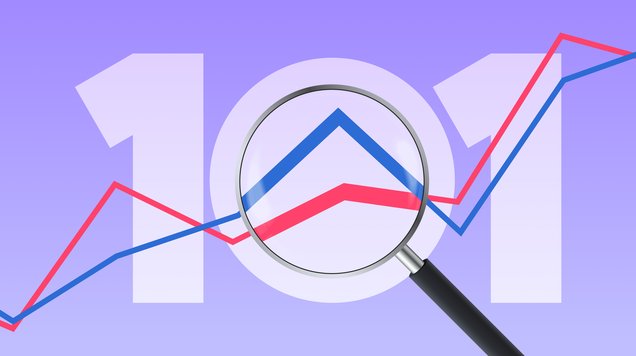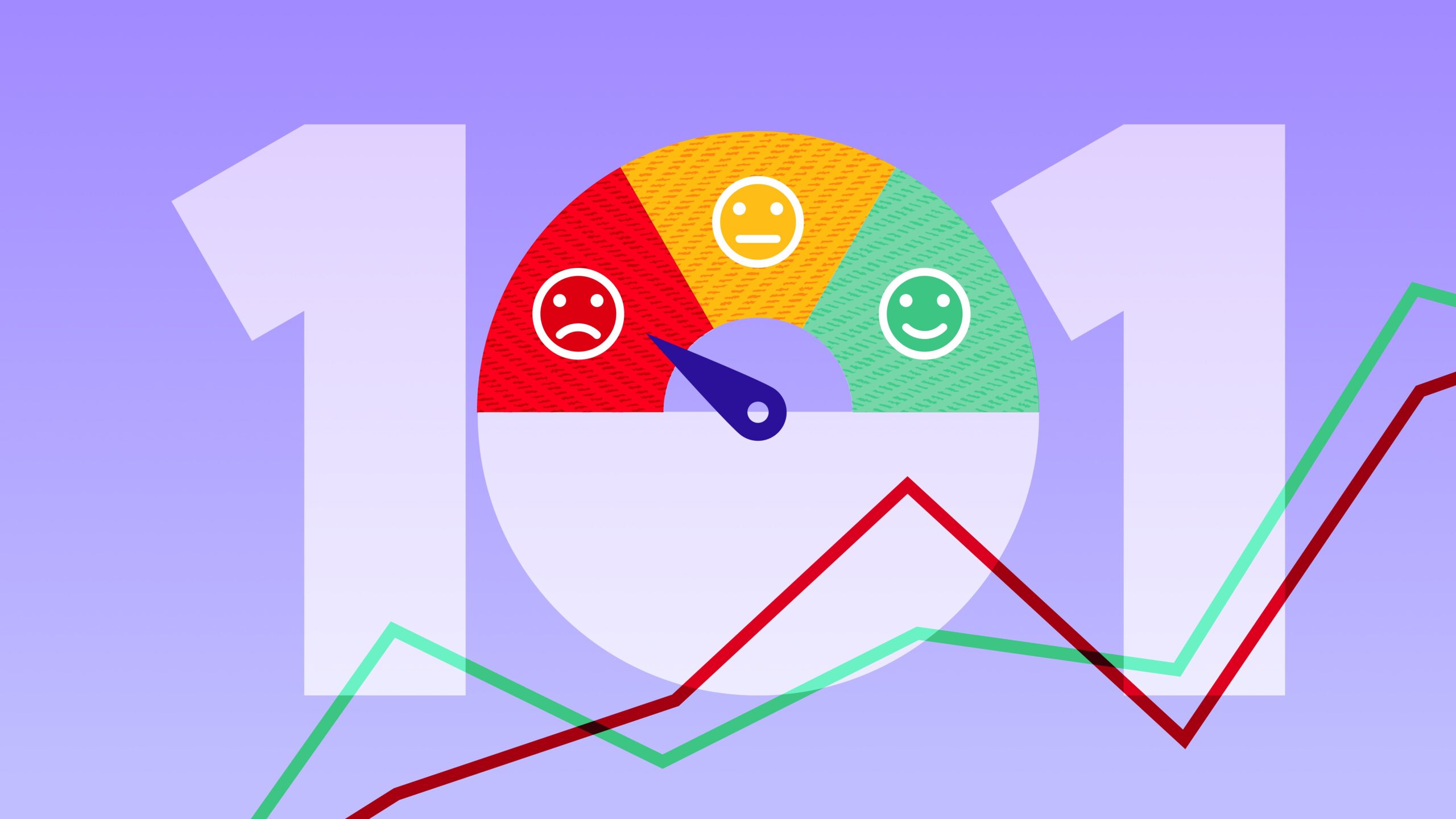In the age of information overload, understanding the sentiments expressed online has become crucial for businesses, marketers, and decision-makers. Welcome to Sentiment Analysis 101, where we delve into the intricacies of deciphering emotions in the vast landscape of digital communication.
Introduction to Sentiment Analysis 101

Sentiment analysis 101, also known as opinion mining, is the process of determining the emotional tone behind a piece of text, be it a tweet, product review, or news article. Its primary goal is to understand the attitudes and feelings expressed by individuals toward a particular subject or topic.
Importance in Today’s Digital Age
In a world where information spreads at lightning speed through social media and online platforms, businesses can no longer afford to ignore the sentiments of their audience. Sentiment analysis provides a valuable lens through which organizations can gauge public opinion, adapt their strategies, and enhance their overall decision-making processes.
How Sentiment Analysis Works
1. Natural Language Processing (NLP)
At the heart of sentiment analysis lies Natural Language Processing, a branch of artificial intelligence focused on enabling machines to understand, interpret, and generate human-like language. NLP algorithms form the foundation for extracting meaning from textual data, making it possible to discern sentiments effectively.
2. Machine Learning Algorithms
In the realm of sentiment analysis, machine learning algorithms play a pivotal role, allowing systems to learn and adapt based on patterns within data. Let’s delve into some key machine-learning techniques commonly employed in sentiment analysis.
3. Supervised Learning
Supervised learning is a foundational approach where the algorithm is trained on labeled datasets. These datasets consist of text samples paired with corresponding sentiment labels (positive, negative, or neutral). During training, the algorithm learns to recognize patterns and associations, enabling it to predict sentiments for new, unseen data.
This method is effective for binary classification tasks, such as determining whether a movie review is positive or negative. However, it may struggle with more nuanced sentiments or contexts.
4. Unsupervised Learning
Contrasting with supervised learning, unsupervised learning involves working with unlabeled data. Algorithms aim to identify patterns and group similar texts based on inherent features without predefined sentiment labels. Clustering techniques, like K-means or hierarchical clustering, are commonly applied in unsupervised sentiment analysis.
Unsupervised learning is advantageous for discovering hidden patterns and uncovering sentiment nuances within large datasets. However, it relies heavily on the quality of data and may lack precision compared to supervised approaches.
5. Semi-Supervised Learning
Semi-supervised learning strikes a balance between supervised and unsupervised approaches. In this method, the algorithm is trained on a combination of labeled and unlabeled data. The labeled data guides the model’s learning process, while the unlabeled data helps uncover additional patterns and sentiments.
This approach is particularly useful when obtaining large labeled datasets is challenging. It combines the benefits of both supervised and unsupervised learning, offering a versatile solution for sentiment analysis tasks.
6. Deep Learning
Deep learning, a subset of machine learning, involves neural networks with multiple layers (deep neural networks). Recurrent Neural Networks (RNNs) and Long Short-Term Memory (LSTM) networks are popular choices for sentiment analysis.
These networks excel at capturing sequential information, making them effective for analyzing text data. They can grasp dependencies between words in a sentence, capturing context and improving the accuracy of sentiment predictions.
7. Ensemble Methods
Ensemble methods combine predictions from multiple machine learning models to enhance overall performance. Techniques like bagging and boosting aim to reduce overfitting and increase the robustness of sentiment analysis models.
Ensemble methods are beneficial when dealing with noisy or imbalanced data, providing a more reliable and accurate sentiment analysis outcome.
Data Collection and Processing
Efficient sentiment analysis relies heavily on the quality and relevance of the data being processed. Let’s explore the crucial steps involved in data collection and processing for effective sentiment analysis 101.
Data Collection
- Source Selection: Choose sources relevant to your analysis goals. Social media platforms, customer reviews, and news articles are common sources providing valuable insights into public sentiment.
- Data Scraping and Crawling: Automated tools can be employed to scrape data from websites or crawl social media platforms. This ensures a continuous influx of data for analysis.
- Data Preprocessing: Raw data often contains noise, irrelevant information, or inconsistencies. Preprocessing involves cleaning and organizing the data, removing irrelevant characters, and standardizing formats for consistency.
Text Representation
- Tokenization: Break down sentences into individual words or phrases, known as tokens. This step aids in understanding the structure of the text.
- Word Embeddings: Convert words into numerical vectors, capturing semantic relationships between words. Word embeddings enhance the ability of algorithms to grasp context and meaning.
Feature Extraction
- TF-IDF (Term Frequency-Inverse Document Frequency): Assign weights to words based on their frequency in a document relative to their frequency across all documents. This method identifies important words in a document.
- N-grams: Analyze sequences of ‘n’ adjacent words. N-grams capture contextual information and are especially useful for understanding sentiment nuances.
Applications of Sentiment Analysis 101
Sentiment analysis 101 finds its application across various domains, playing a pivotal role in shaping strategies and decision-making processes.
1. Social Media Monitoring
In the realm of social media, where opinions are shared freely and abundantly, sentiment analysis 101 serves as a powerful tool. It allows businesses to track brand mentions, identify trending topics, and promptly respond to customer feedback. The ability to gauge public sentiment in real-time provides a competitive edge in managing online reputation.
2. Customer Feedback Analysis
Understanding customer sentiments is key to improving products and services. Sentiment analysis helps in systematically analyzing customer reviews and feedback, identifying areas of improvement, and tailoring offerings to meet consumer expectations. This not only enhances customer satisfaction but also fosters loyalty and brand advocacy.
3. Brand Reputation Management
A positive brand image is crucial for success. Sentiment analysis aids in monitoring how a brand is perceived in the market. By tracking sentiments associated with brand mentions, companies can proactively address potential PR crises and cultivate a positive public perception.
Challenges
While Sentiment Analysis 101 offers valuable insights, it grapples with certain challenges that need to be navigated for accurate and reliable results.
1. Ambiguity in Language
Human language is intricate and often ambiguous. Words can have different meanings depending on context, and sentiments can be expressed subtly. Sentiment analysis algorithms must contend with this linguistic complexity to avoid misinterpretations.
2. Context Understanding
Understanding the context of a statement is crucial for accurate sentiment analysis. Words may carry different sentiments based on the context in which they are used. Distinguishing between positive, negative, or neutral sentiments requires an understanding of the broader conversation.
3. Handling Sarcasm and Irony
Sarcasm and irony add another layer of complexity. While humans can easily grasp the intended meaning behind sarcastic remarks, machines may struggle. Developing algorithms that can discern the subtleties of language is an ongoing challenge in the field of sentiment analysis.
Sentiment Analysis Tools
A variety of tools and technologies contribute to the success of Sentiment Analysis 101, catering to different needs and preferences.
1. Sentiment Analysis APIs
For quick and efficient sentiment analysis, many businesses turn to Application Programming Interfaces (APIs). These pre-built solutions offer a convenient way to integrate sentiment analysis into applications, saving time and resources.
2. Open-Source Sentiment Analysis Tools
Open-source tools provide flexibility and customization options for those looking to tailor sentiment analysis to their specific requirements. Tools like NLTK (Natural Language Toolkit) and TextBlob empower users to adapt algorithms to their unique datasets.
3. Custom-Built Solutions
For enterprises with specific needs, custom-built sentiment analysis solutions offer a tailored approach. Developing in-house tools allows organizations to fine-tune algorithms based on their industry, audience, and objectives.
Benefits for Businesses
Implementing sentiment analysis translates into tangible benefits for businesses looking to stay ahead in a competitive landscape.
1. Enhancing Marketing Strategies
Sentiment analysis provides marketers with valuable insights into how their target audience perceives products and campaigns. By understanding the sentiments expressed in response to marketing efforts, companies can tailor their strategies to resonate better with their audience. This leads to more effective and targeted marketing campaigns.
2. Predicting Market Trends
Analyzing sentiments in online discussions and reviews can act as a crystal ball for predicting market trends. By identifying emerging topics and sentiments, businesses can stay ahead of the curve, adapting their offerings to align with evolving consumer preferences.
Ethical Considerations
As we leverage technology for sentiment analysis, it’s imperative to navigate the ethical considerations associated with handling vast amounts of personal data.
1. Privacy Concerns
Sentiment analysis often involves analyzing text data from public sources, raising concerns about individual privacy. Striking a balance between extracting insights and respecting user privacy is crucial to maintaining ethical standards.
2. Bias and Fairness
Algorithms used in sentiment analysis may inadvertently incorporate biases present in training data. It’s essential to continually assess and address biases to ensure fair and unbiased sentiment analysis results, avoiding the perpetuation of existing stereotypes.
3. Responsible Use of Data
Responsible data usage is paramount. Companies must be transparent about how they collect and utilize data for sentiment analysis, gaining the trust of their audience. Implementing robust data protection measures safeguards against misuse and potential breaches.
Future Trends
The landscape of sentiment analysis is dynamic, with ongoing advancements shaping its future trajectory.
1. Advanced NLP Techniques
As natural language processing evolves, sentiment analysis will benefit from more sophisticated language understanding. Advanced techniques, such as deep learning, will enable algorithms to grasp context and nuances with greater accuracy.
2. Integration with AI and IoT
The integration of sentiment analysis with artificial intelligence (AI) and the Internet of Things (IoT) will open new possibilities. Smart devices analyzing user sentiment can provide personalized experiences, from voice assistants adapting to emotions to smart products responding to user feedback.
Lessons Learned
In studying successful sentiment analysis implementations, certain key lessons emerge.
- Tailor Solutions to Industry Needs: Sentiment analysis is not one-size-fits-all. Successful implementations recognize the unique language and nuances specific to their industry, adapting algorithms accordingly.
- Combine Automated Analysis with Human Insight: While automated sentiment analysis is powerful, combining it with human judgment enhances accuracy. Human insight can decipher subtle nuances that algorithms might miss, especially in emotionally charged or complex contexts.
- Continuous Monitoring and Adaptation: Sentiments change over time, influenced by external factors and evolving trends. Implementations that continuously monitor and adapt their sentiment analysis strategies remain agile and responsive to shifting public opinion.
Tips for Effective Sentiment Analysis
Implementing sentiment analysis 101 effectively requires a strategic approach and attention to detail.
1. Choosing the Right Tools
Selecting the appropriate sentiment analysis tools is crucial. Consider factors such as the nature of your data, the level of customization required, and the specific goals of your analysis. Whether opting for APIs, open-source tools, or custom solutions, align the tools with your unique needs.
2. Continuous Monitoring and Adaptation
Sentiment is dynamic. Regularly monitor and adapt your sentiment analysis strategy to reflect changing trends and sentiments. Staying attuned to shifts in public opinion allows for proactive adjustments to marketing strategies or customer service approaches.
3. Incorporating Human Judgment
While technology plays a significant role, human judgment remains invaluable. Humans can understand context, sarcasm, and cultural nuances in a way that algorithms may struggle with. Combine the power of technology with human insight for more nuanced and accurate results.
Educational Resources on Sentiment Analysis
For those looking to dive deeper into sentiment analysis, various educational resources are available.
1. Online Courses
Platforms like Coursera, edX, and Udacity offer comprehensive courses on natural language processing and sentiment analysis. These courses cover everything from the basics to advanced techniques, providing a solid foundation for beginners and experienced professionals alike.
2. Books
Explore literature on sentiment analysis to gain a deeper understanding of the field. Notable books such as “Sentiment Analysis and Opinion Mining” by Bing Liu and “Natural Language Processing in Action” by Lane, Howard, and Hapke offer valuable insights and practical knowledge.
3. Workshops and Seminars
Participating in workshops and seminars allows for hands-on learning and networking opportunities. Events hosted by organizations like the Association for Computational Linguistics (ACL) provide a platform to engage with experts and stay updated on the latest developments.
Practical Advice for Beginners
Embarking on the journey of sentiment analysis 101 can be both exciting and challenging, especially for beginners.
- Start with Simple Projects: Begin your foray into sentiment analysis with straightforward projects. Analyzing product reviews or social media comments can provide a hands-on experience without overwhelming complexity.
- Understand Your Data: Before applying any sentiment analysis technique, thoroughly understand the nature of your data. Consider the language used, potential biases, and any domain-specific nuances that may impact the accuracy of your analysis.
- Experiment with Different Algorithms: Sentiment analysis offers a spectrum of algorithms, each with its strengths and weaknesses. Experiment with various approaches to discover which works best for your specific use case. This iterative process helps refine your analysis over time.
Common Misconceptions about Sentiment Analysis
Despite its benefits, sentiment analysis is not without its share of misconceptions.
- Oversimplification: Some assume sentiment analysis provides a binary view of sentiments—positive or negative. In reality, sentiments can be nuanced, and algorithms can classify them on a spectrum, capturing shades of positivity, negativity, or neutrality.
- Relying Solely on Automated Solutions: While automated tools are powerful, relying solely on them can overlook context and subtle nuances. Human judgment remains essential to interpret sentiments accurately, especially in complex or emotionally charged scenarios.
- Ignoring the Human Element: Sentiment analysis is not purely a technological endeavor. Understanding the human element—cultural context, humor, and colloquialisms—is crucial for meaningful analysis. Incorporating this human touch ensures a more holistic interpretation of sentiments.
Conclusion
Sentiment analysis, powered by machine learning algorithms and robust data processing, opens a gateway to understanding the pulse of the digital world. As businesses and individuals harness the potential of sentiment analysis to make informed decisions, the importance of choosing the right tools, refining algorithms, and staying attuned to evolving industry trends cannot be overstated.
In your journey into sentiment analysis, consider the diverse array of machine learning techniques—from supervised and unsupervised learning to deep learning and ensemble methods. Each has its strengths, and the choice depends on the specific requirements of your analysis task.
As you explore the vast landscape of sentiment analysis, AIM Technologies stands ready to guide you through the intricacies of implementing these powerful tools. AIM Technologies provides state-of-the-art solutions tailored to your unique needs, ensuring that you harness the full potential of sentiment analysis for your business.
Ready to take the next step? Request a demo from AIM Technologies today and unlock the insights hidden within your data.
FAQs
What industries benefit the most from sentiment analysis?
- Sentiment analysis finds applications in diverse industries, including marketing, customer service, finance, and healthcare. Any sector that values understanding public opinion can benefit.
How accurate are sentiment analysis tools?
- Accuracy varies based on the quality of algorithms and the nature of the data. Continuous monitoring, human validation, and algorithm refinement contribute to improved accuracy.
Can sentiment analysis predict stock market trends?
- While sentiment analysis can offer insights into public opinion, predicting stock market trends is complex. It’s one of many factors investors may consider.
Are there any legal concerns related to sentiment analysis?
- Privacy and data protection are critical considerations. Ensuring compliance with data regulations and obtaining consent for analysis are essential steps in addressing legal concerns.
How often should businesses conduct sentiment analysis?
- The frequency of sentiment analysis depends on business goals and industry dynamics. Regular monitoring, especially during key events or product launches, helps businesses stay informed.




